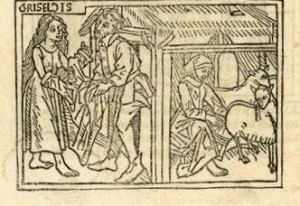 Somewhere deep down inside of me there is a village woman – a woman who is most content with traditional roles, limited choices, a life centered around an extended family, and a predictable future not involving a lot of change. That isn’t how I was brought up, of course, and it’s not what I would consciously choose for myself. I wouldn’t recommend it, in the literal sense, to a friend, relative, or a woman I was counseling, even if it were a practical possibility, which in most cases it is not.
Somewhere deep down inside of me there is a village woman – a woman who is most content with traditional roles, limited choices, a life centered around an extended family, and a predictable future not involving a lot of change. That isn’t how I was brought up, of course, and it’s not what I would consciously choose for myself. I wouldn’t recommend it, in the literal sense, to a friend, relative, or a woman I was counseling, even if it were a practical possibility, which in most cases it is not.
I am trained as an evolutionary biologist and I am convinced that every human being carries a good deal that is genetically hard-wired in his or her psychological makeup. This is recognized in certain emotions and reactions to situations – such as the fight or flight response – that are obviously common between humans and other social animals. But what about other, more nuanced shades of emotion, those which seem to be exclusively human? To what extent are these under conscious control of rational adults, to what extent are they the product of culture and life history, and to what extent are they part of our evolutionary heritage?
My experience and biological training point to all three being important, in varying degrees depending on the individual, culture and the particular situation. Civilization would hardly be possible if everyone consistently acted impulsively based on animal instincts, and many of the curbs to such behavior are the product of rational deliberation. Life history is obviously an important factor influencing both emotional response and the action taken based on it. What interests me most, however, is the evolutionary history, and particularly the evolutionary history of humans in the last ten thousand years or so, when we moved from a hunter-gatherer mode of existence to settled villages.
I focus on the village, because in all probability that was where my ancestors, and most readers’ ancestors, lived from late prehistory until the beginning of the nineteenth century. That’s about 250 generations during which most people were selected to thrive in small agricultural communities, with limited choices, close kinship ties, and predictable life trajectories, versus perhaps eight generations of the modern fast-paced disconnected life Americans take for granted and consider normative. Furthermore, the low infant mortality rate in modern times means that the rate of adaptation at the genetic level is if anything slower than it was a thousand years ago or more.
Even if I wanted to, I couldn’t physically recreate the conditions of my ancestral village. What I can do is conceptualize it in some detail and then act out a present dilemma as if it were occurring in that setting. I think this is one of the reasons why historical reenactment associations are so satisfying to some people. Pretending that one is immersed in the American Civil War or the Court of Charlemagne can be a way of escaping from reality entirely, or it can be a way of reframing a current problem in a different context.
A key to making this work as a tool to improve mental health is to create a realistic picture of the environment in which your actual ancestors lived, say five hundred years ago, and insert yourself as a participant, in the appropriate gender and social class. The majority of people on earth, at all times in history, were peasant farmers. Unless you have specific information to the contrary, that’s a good place to start.
In 1500, my Sherwood ancestors were living in the town of Nottingham and were middle class. A widow [I’m actually a “grass” widow, but divorce for reasons of incompatibility is a very recent phenomenon] my age (64) in Tudor England, with a little inherited property, a family business I couldn’t run on my own, and one surviving daughter would have been focused on finding a suitable husband for the daughter and seeing the family bloodline passed on in the form of grandchildren. I am happy that my single daughter has a fulfilling life but the twinges I feel when I see my contemporaries holding grandchildren are very real. There’s basic biology involved, and a few thousand years of people doing what worked best to propagate the human species.
In this case, it’s not my decision, so I can only sit back and feel at least a little validated – if the way I have conceptualized the situation is correct, then my wanting grandchildren doesn’t make me some ignorant yahoo who is party to the oppression of women. There are other situations in which the ancestral village metaphor can be an active tool in personal decision-making. I will discuss some of these in a future post.
Photo Credit
Historia Griseldis – Public Domain – Rare Book and Special Collections Reading Room, Library of Congress


[…] Read Part 1: Healing In A Virtual Village – 1 […]